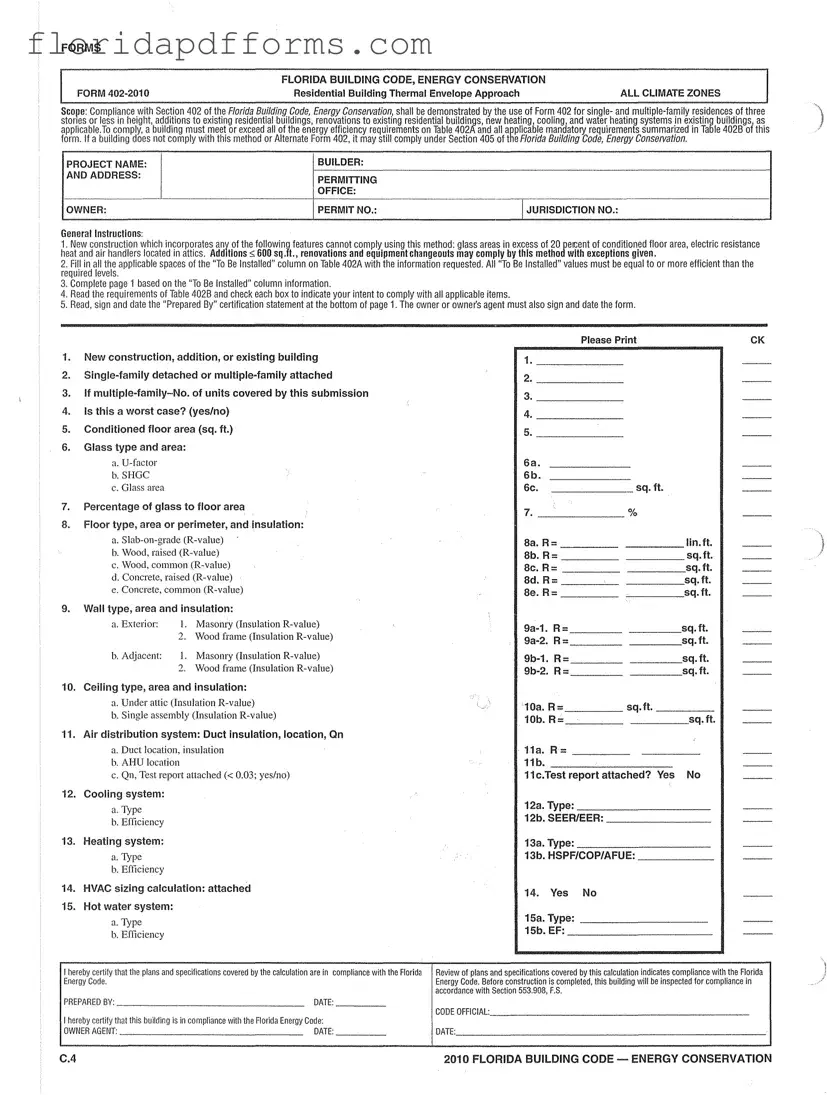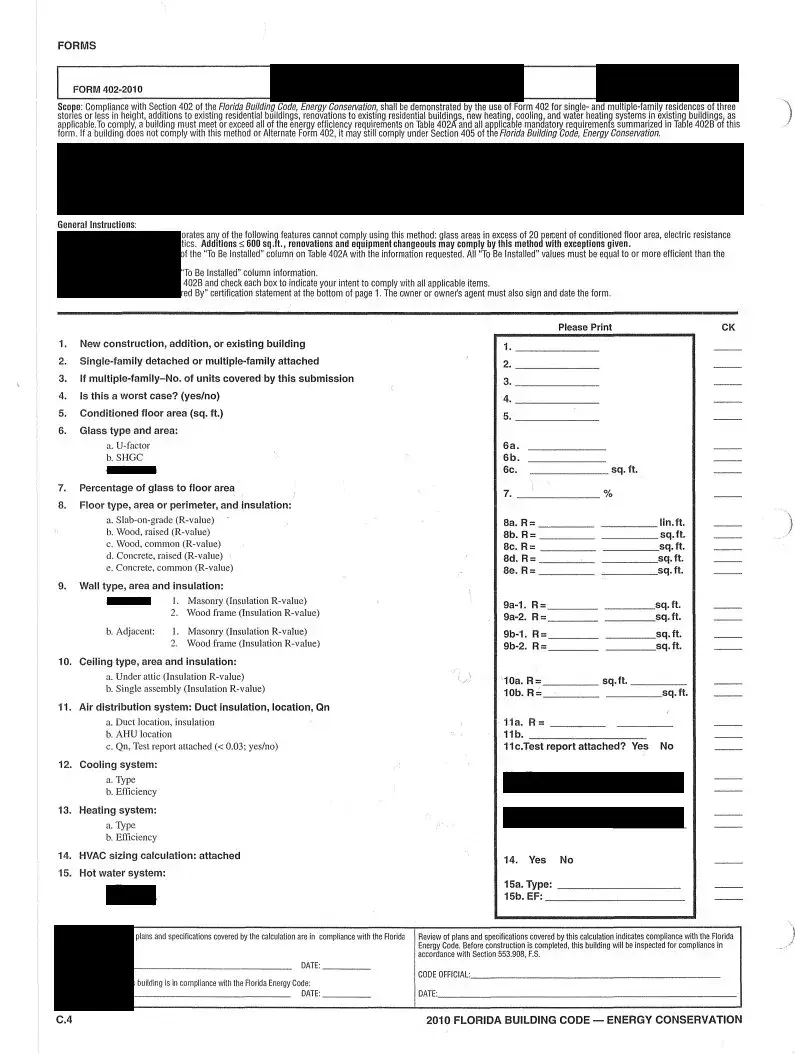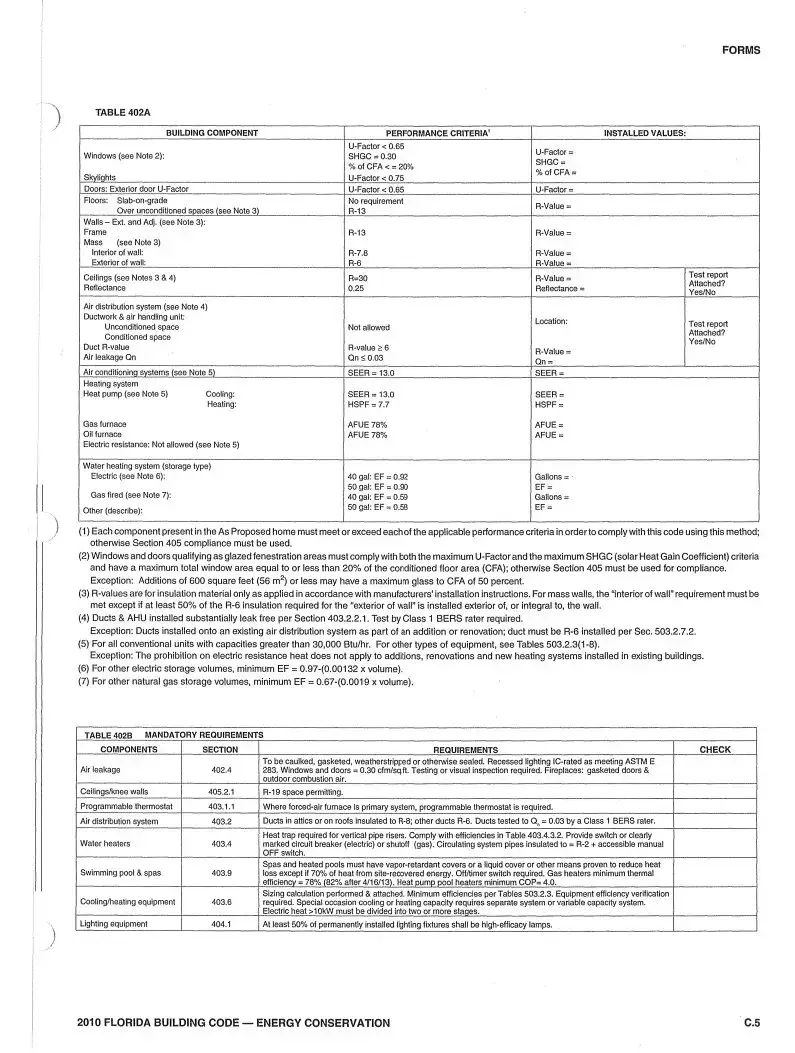The Florida Energy Form shares similarities with the California Title 24 Energy Compliance Form. Both documents serve to ensure that new constructions and renovations meet energy efficiency standards. The California form outlines specific requirements for building components, such as insulation, windows, and HVAC systems, mirroring the structure found in the Florida form. Each form includes detailed tables that specify performance criteria, ensuring that builders adhere to energy conservation measures that promote sustainability and reduce energy consumption.
Another comparable document is the New York State Energy Code Compliance Form. Like the Florida Energy Form, it is designed to demonstrate compliance with energy conservation measures. The New York form includes a checklist of mandatory requirements for various building components, including insulation and HVAC systems. Both forms emphasize the importance of detailed calculations and specifications to verify compliance, thus promoting energy-efficient building practices across different states.
The International Energy Conservation Code (IECC) also aligns closely with the Florida Energy Form. This model code provides guidelines for energy efficiency in residential and commercial buildings. Similar to the Florida form, the IECC includes tables that outline performance criteria for insulation, windows, and HVAC systems. Both documents aim to ensure that buildings are constructed or renovated with energy efficiency in mind, contributing to overall energy conservation efforts.
The Energy Star Certification Application is another document that shares common goals with the Florida Energy Form. Energy Star focuses on promoting energy-efficient products and practices. The application requires builders to provide information about energy-efficient features in their homes, much like the Florida form requires detailed specifications for compliance with energy conservation standards. Both documents ultimately seek to reduce energy usage and promote sustainable building practices.
The Residential Green Building Guidelines, published by various states, also resemble the Florida Energy Form. These guidelines provide a framework for constructing energy-efficient homes, covering areas such as insulation, HVAC systems, and water heating. Similar to the Florida form, these guidelines include performance criteria that builders must meet to ensure energy efficiency. Both documents aim to foster environmentally friendly building practices that minimize energy consumption.
The LEED (Leadership in Energy and Environmental Design) certification process is another related document. LEED provides a comprehensive framework for designing and constructing sustainable buildings. While the Florida Energy Form focuses specifically on energy conservation, LEED encompasses broader sustainability measures, including water efficiency and indoor environmental quality. Both documents share the goal of promoting energy efficiency and reducing the environmental impact of buildings.
The Building Energy Optimization (BEO) form is also similar to the Florida Energy Form. The BEO focuses on optimizing energy performance in residential buildings. Like the Florida form, it requires detailed documentation of building components and systems to ensure compliance with energy efficiency standards. Both documents emphasize the importance of accurate calculations and specifications to achieve optimal energy performance in new constructions and renovations.
Finally, the Home Energy Rating System (HERS) Index is another document that aligns with the Florida Energy Form. The HERS Index provides a scoring system for the energy efficiency of homes. Similar to the Florida form, it requires detailed assessments of various building components, including insulation, windows, and HVAC systems. Both documents aim to provide homeowners and builders with a clear understanding of energy efficiency and encourage improvements that lead to reduced energy consumption.


 common
common 